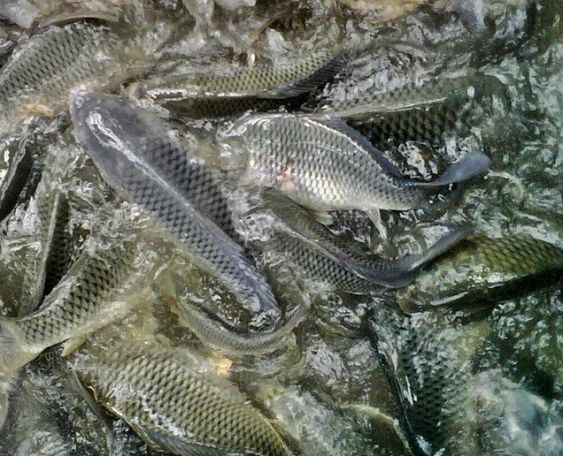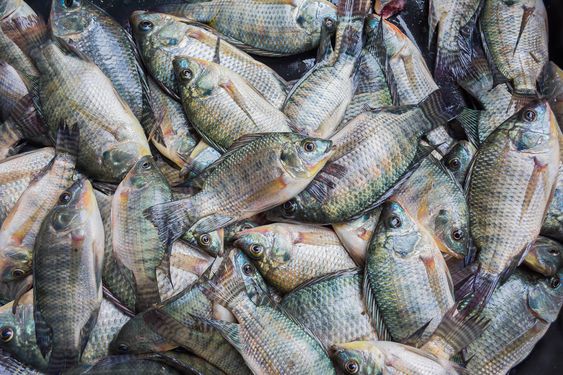Tilapia Fish Ponds: A Guide to Raising Delicious and Sustainable Fish
Tilapia Fish Ponds are a versatile and popular freshwater fish, prized for their mild flavor and fast growth rate. Tilapia fish ponds offer a unique opportunity to raise your own sustainable food source while managing your pond ecosystem. This comprehensive guide explores everything you need to know about creating and maintaining a thriving tilapia fish pond.
Contents
Why Tilapia?
Several factors make tilapia ideal for pond culture:
- Warm-water fish: Tilapia thrive in warm climates, with optimal temperatures between 75-86°F (24-30°C). They become sluggish in colder environments, so consider your climate when planning your pond.
- Fast growers: Tilapia can reach marketable size (around 1 lb) within 6-8 months under ideal conditions.
- Omnivores: Tilapia feed on algae, plankton, and supplemental fish food, making them adaptable to pond ecosystems.
- Disease resistant: Generally, tilapia are hardy fish with good resistance to common diseases.
Planning Your Tilapia Fish Ponds
- Location and Size: Choose a sunny location with good drainage and accessibility. The ideal pond size depends on your goals. For backyard consumption, a pond of 500-1000 square feet is suitable. For larger-scale production, consult resources on commercial tilapia farming.
- Depth: Aim for a depth of 4-6 feet (1.2-1.8 meters) to provide cooler water during hot summers and prevent winterkill in colder climates.
- Lining: Consider using a pond liner made of high-density polyethylene (HDPE) to prevent water loss and seepage. Clay liners are an alternative but require more maintenance.
Creating a Healthy Tilapia Fish Ponds Ecosystem
- Water Quality: Maintain good water quality through regular testing and adjustments of pH and ammonia levels. Aeration is crucial, especially in densely stocked ponds, to provide sufficient oxygen. Consider installing a pump and aeration system.
- Vegetation: Aquatic plants play a vital role. Submerged plants like hornwort or elodea oxygenate the water and provide food for tilapia. Emergent plants around the pond edge offer shade and shelter.
- Balance: While tilapia help control algae growth, excessive algae blooms can deplete oxygen. Monitor algae levels and introduce algae-eating fish like catfish if needed, to maintain a balanced ecosystem.
Stocking Your Tilapia Fish Ponds
- Fingerlings Tilapia Fish Ponds: Purchase healthy fingerlings (young tilapia) from a reputable hatchery.
- Monosex Culture: For optimal growth, consider stocking monosex tilapia (all-male). Males grow faster than females, which expend energy on egg production. Sex reversal through hormones is a common practice in commercial tilapia farming.
- Stocking Density: The recommended stocking density depends on your pond size, water quality, and management practices. Generally, aim for 1-2 fish per square foot of water surface area.
Feeding and Maintaining Your Tilapia
Tilapia are opportunistic feeders, consuming algae, plankton, and detritus in the pond. Supplement their diet with high-quality commercial fish feed to ensure proper growth and health.
- Feeding Frequency: Feed your tilapia 2-3 times a day, providing only what they can consume within a short period to avoid overfeeding and water quality issues.
- Feed Type: Choose a balanced fish feed formulated for tilapia, containing essential nutrients for healthy growth. Floating pellets are a convenient option.
- Water Quality Monitoring: Regularly monitor water quality parameters like pH, ammonia, and dissolved oxygen. Invest in a basic water testing kit or consult professional testing services.
- Water Changes: Conduct partial water changes (10-20%) every few weeks to replenish oxygen levels and remove accumulated waste products.
- Predator Control: Tilapia are prey for birds like herons and fish-eating animals like raccoons. Implement fencing or netting around the pond to deter predators.
- Harvesting Tilapia Fish Ponds: When your tilapia reach desired size, harvest them using a seine net or other appropriate methods. Handle them carefully to minimize stress.
Additional Considerations
- Regulations: Check local regulations regarding tilapia stocking in your area. Permits might be required.
- Winter Care: In colder climates, consider harvesting your tilapia before winter or taking steps to protect them from freezing temperatures. This may involve deeper ponds, aeration systems, or relocating the fish to a protected indoor space.






